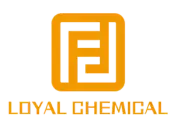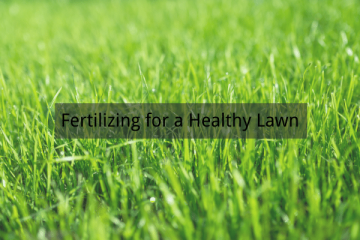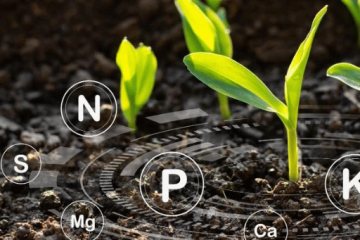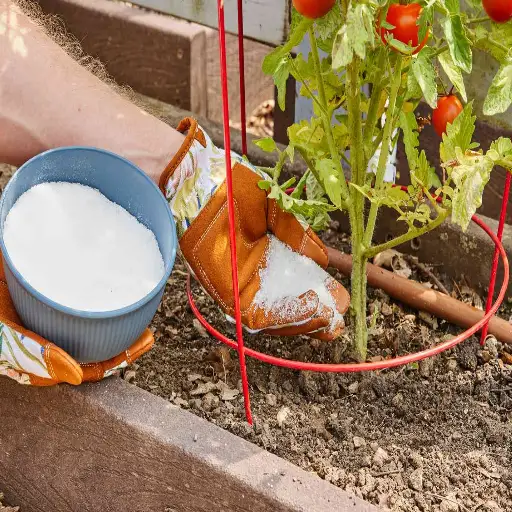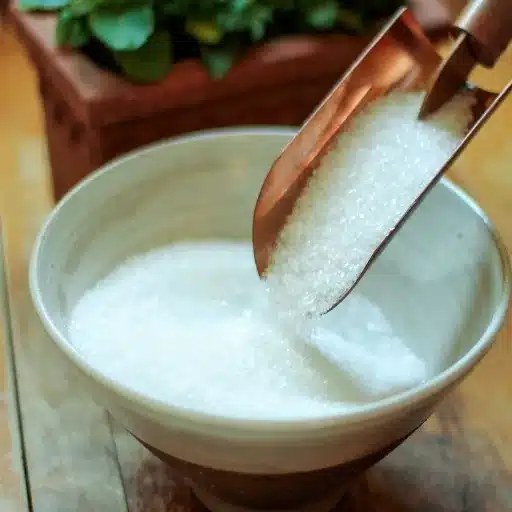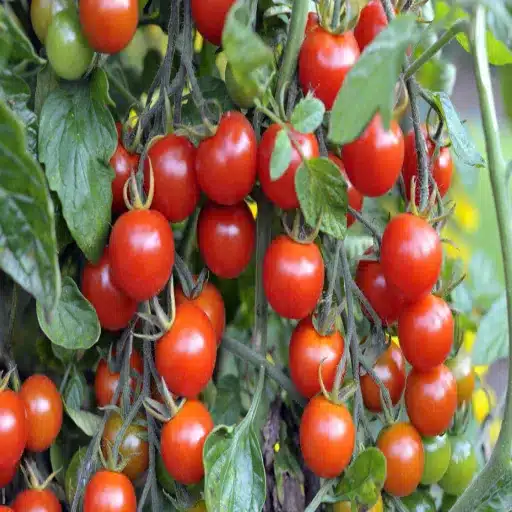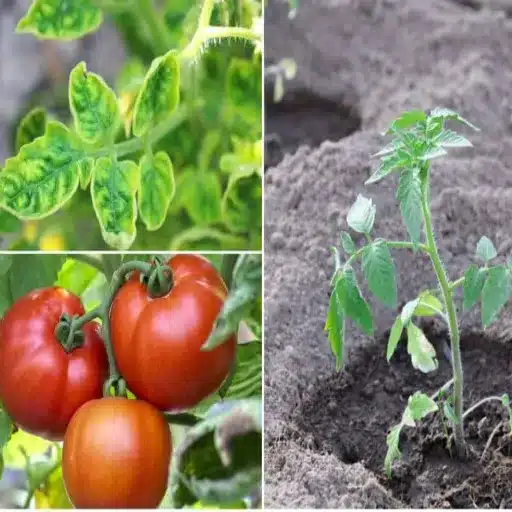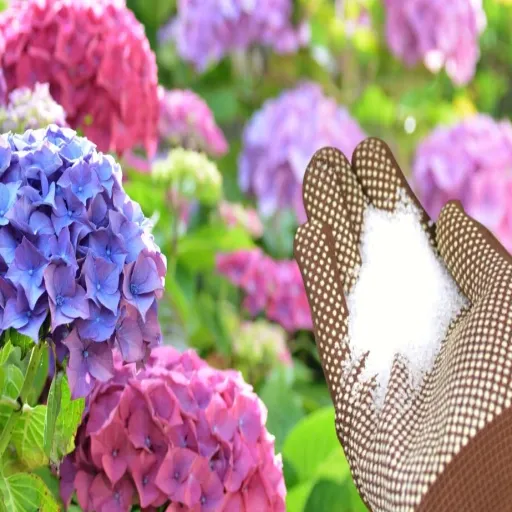Gardening enthusiasts and professionals alike are constantly searching for effective, affordable, and eco-friendly ways to nurture their plants and optimize growth. One such miraculous solution often overlooked is Epsom salt—a simple yet powerful compound poised to elevate your gardening game. Known chemically as magnesium sulfate, Epsom salt is packed with two essential elements, magnesium, and sulfur, which are vital for healthy plant development. This blog explores the science behind Epsom salt’s transformative properties, its wide-ranging applications in the garden, and how you can integrate it into your plant care routine to achieve thriving, vibrant vegetation. Whether you’re growing lush flowers, robust vegetables, or maintaining pristine lawns, understanding this garden hack could revolutionize your approach to plant care.
Which plants benefit most from Epsom salt?
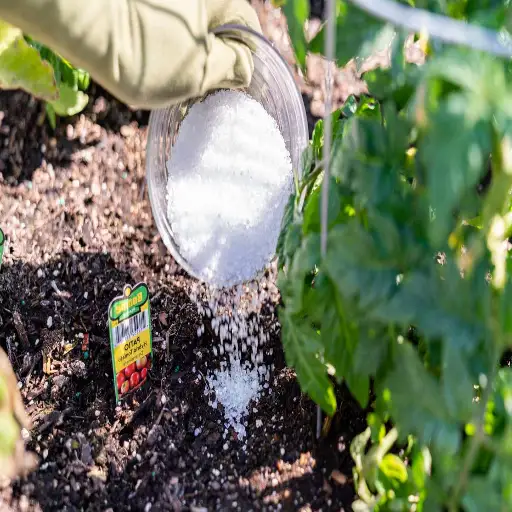
Vegetables that thrive with Epsom salt treatments
Vegetables such as tomatoes, peppers, and beans are highly responsive to Epsom salt treatments considering their high magnesium requirement during critical growth periods. Magnesium is very important for the formation of chlorophyll, which in turn is crucial for photosynthesis and nutrient absorption, resulting in healthier plants and greater yields. For example, using Epsom salt on tomatoes helps to avoid blossom end rot which is often associated with nutrient imbalance.
- Seedlings: Mix 1 tablespoon of Epsom salt into 1 gallon of water. Use it as a foliar spray once every two weeks during early growth.
- Transplants: 1 tablespoon of dry Epsom salt can be added to the bottom of the planting hole to help with root development.
- Ongoing Treatment: For older plants, 1 tablespoon of Epsom salt can be added to 1 gallon of water and used as a foliar spray or soil drench every four to six weeks.
These applications provide an adequate dose of magnesium while avoiding over-fertilization which is detrimental to soil health. This strategy increases the effectiveness of vegetable and plant health improvement measures.
Flowers and ornamental plants that love Epsom salt
Epsom salt is recommended for a variety of flowers and plants, especially those that are ornamentals. The reason is that Epsom salt consists of magnesium sulfate which is beneficial for the production of chlorophyll along with good nutrient uptake. Additionally, magnesium is essential for nutrient absorption for the plants to grow high and bloom beautifully. Find below some examples of flowers and plants that are recommended:
- Roses: Between May and October, one tablespoon should be added to the soil for every foot in plant height. Alternatively, one tablespoon of Epsom salt can also be added to a single gallon of water to be used as a foliar spray every two weeks to get healthy flower blooms and strong plant growth.
- Azaleas and Rhododendrons: One tablespoon of Epsom salt is added to a gallon of water and poured around the base of the plants every 30-45 days from March to October to enhance flowering size and quality.
- Gardenias: One tablespoon of Epsom salt should be applied directly to the ground around the base of the plant every 30 days. The magnesium in Epsom salt enables the plant to grow vivid leaves and flowers.
- Camellias: From May to August, 1 tablespoon of Epsom salt per gallon of water can be used every 30 days. These enhanced the overall power of the plants together with good flowering.
Like with all interventions, remember to check your dosage correctly so the soil nutrient levels do not get imbalanced. Epsom salt should be applied depending on the soil conditions, hence adjusting the quantity of salt depending on specific environmental conditions would help maintain plant health and justify the continued usage of Epsom salt. Frequent monitoring and soil checking will also aid in maintaining plant health.
Plants that don’t like Epsom salt
The proper dosage of Epsom salt (magnesium sulfate) solution per gallon of water is determined by the needs of the plant type and its stage of growth. When used in the garden, the estimated dosage is 1-2 tablespoons of Epsom salt per gallon of water.
- Magnesium Supplementation: Epsom salt assists in delivering magnesium which is vital for enabling photosynthesis and chlorophyll production.
- Sulfur Addition: Sulfur is an essential component for amino acids and overall plant metabolism.
- Concentration Limits: The amount of 1-2 tablespoons achieves a safe dilution for foliar or soil application and prevents salt accumulation that could bring about nutrient lockout.
- Application Frequency: For best results, apply this solution once a month, or as a foliar spray every two weeks during the growing season to ensure the plant gets adequate nutrients.
As plant-specific tests are done soils need will change. Always monitor plants to avoid over-application.
How to use Epsom salt in your garden effectively?
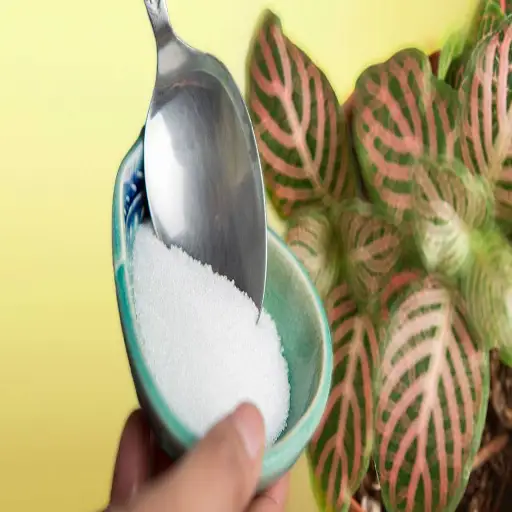
Proper dosage: How much Epsom salt per gallon of water?
The right amount of Epsom salt (magnesium sulfate) to use per one gallon of water will vary depending on the particular plant type and its growth stage. Generally, 1 to 2 tablespoons of Epsom salt per gallon of water should suffice for most gardens.
- Magnesium: An Epsom salt supplement is ideal because it has magnesium which is a vital nutrient needed for photosynthesis and chlorophyll production.
- Sulfur: A necessary element for plant metabolic activities and amino acid formation.
- Ceiling Concentration: To eliminate the salt build-up risk in the case of foliar or soil application of the Epsom salt solution, 1 to 2 tablespoons should be used. This dosage will fall within the safe limit.
- Frequency of Application: For optimal results, this solution should be applied monthly or, during the growing season, as a foliar spray every two weeks. This will ensure that the plant receives maximum nutrition.
Dosage and nutrient requirements may vary alongside soil tests. Note that to prevent any adverse reactions, the plants must be consistently monitored.
Application methods for different types of plants
- Vegetables: The nutrient solution can be applied through root drenching or foliar spray depending on the growth stage of the plants. A general recommendation is about 1 tablespoon of the nutrient solution for every gallon of water. Additionally, make sure to avoid burning the plants by spraying them during the morning and covering them during late afternoons.
- Fruits: The concentration dosage for fruiting plants is about two tablespoons during the nourishment root zone since fruiting plants tend to be more thirsty. When the fruits start developing, it may be useful to apply two doses bi-weekly for greater yields.
- Ornamental Plants: For ornamental plants, over-fertilization tends to do more harm than good. Keeping it at a dosage of ½ tablespoon per gallon provides enough nutrients. During the active growth periods, it is useful to spray the leaves for bloom maintenance approximately every two weeks.
- Hydroponics System: One thing to note about hydroponic setups is making sure they are less humid than traditional farming because they need to be in a controlled environment. The solution electrically conductively monitoring should be between 1.2 to 2.5, and the pH’s under 6.5 but above 5.5 for best plant absorption.
These simple guidelines need to be followed to achieve optimum plant health without applying too much nutrients, which can lead to imbalances.
Frequency of Epsom salt treatments
Epsom salt treatment usage depends mainly on the plant type and the level of nutrients in the hydroponic solution. In my view, using Magnesium Sulfate Epsom salt as a foliar spray or as a part of the nutrient blend every two weeks guarantees a constant ratio of magnesium and sulfate which are vital for chlorophyll and photosynthesis.
- Thinning: To thin out Epsom salt for use in foliar sprays, dissolve one to two teaspoons of Epsom salt in a gallon of water to ease plant stress and avoid overdosage.
- Formulation: While formulating nutrient solutions, I keep an eye on the Electrical Conductivity (EC) to make sure that it does not go below 1.2 or above 2.5 in order not to cause nutrition excess or defect, as I mentioned earlier.
- Ideal Range: pH should remain between 5.5 and 6.5 because straying too far from this range affects the ability to absorb magnesium efficiently.
A proper blend of all these factors ensures ideal amounts of saturated nutrients that guarantee optimum plant growth without undue risks.
Can Epsom salt help prevent common plant problems?
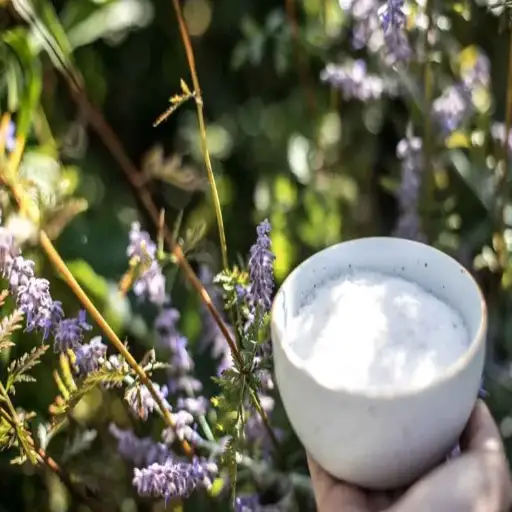
Using Epsom salt to prevent blossom end rot
Blossom end rot is caused by a calcium imbalance within a plant itself, which is associated with inconsistent watering or stress conditions that interfere with calcium absorption. Epsom salt (magnesium sulfate) does not directly solve calcium deficiencies, but it can provide peripheral help. By delivering magnesium, Epsom salt aids in effective photosynthesis and nutrient transfer needed for general plant health maintenance.
- Calcium Absorption: Ensure soil calcium availability through balanced fertilization or amendments like gypsum.
- Magnesium Concentrations: To increase magnesium, dissolve 1 tablespoon of Epsom salt in a gallon of water and apply as a soil drench or foliar spray every 4 to 6 weeks.
- Watering Regimen: Prevent water deficiencies by consistent watering calcium transport problems; soil moisture should be in between dry and overly wet.
pH Level: Aim for a soil pH range of 5.5 to 6.5 for maximum calcium and magnesium utilization.
In combination, these measures lessen the chances of blossom end rot while enhancing the health of the plant.
Addressing magnesium deficiency with Epsom salt
In solving magnesium deficiency, my best suggestion is to use Epsom salt as a source of magnesium because it is readily available and easily soluble. This is my approach:
- Dosing: Add 1 tablespoon (roughly 15 grams) of Epsom salt to 1 gallon of water. Such a concentration ensures sufficient magnesium supplementation without excessive saturation of the soil or foliar surfaces.
- Application: The same solution can be used as a soil drench where magnesium is directly supplied to the root zone or a foliar spray where leaves absorb it directly.
- Interval: This solution is applied every 4 to 6 weeks to maintain steady magnesium levels while controlling possible nutrient imbalances.
- Rationale: Magnesium is the core of chlorophyll and is vital for photosynthesis to happen. I recommend this application approach because it achieves both maximum performance of absorption and minimum risk of nutrient antagonism, especially with calcium or potassium.
Efficiency in solving and preventing magnesium deficiency should also include soil testing, which ensures a balanced magnesium nutrient profile is maintained.
Enhancing nutrient absorption in plants
For my studies, I recommend several targeted strategies that ion absorption in plants based on empirical evidence and field-tested methodologies:
- Optimal Soil pH: As it ensures maximum nutrient availability, maintaining soil pH within a range of 6.0 to 7.0 is critical. Precision can be attained by regularly testing the soil pH and lowering or raising it appropriately using amendments like lime to increase pH or sulfur to decrease pH.
- Chelated Micronutrients: These are best applied in a chelated form, such as with EDTA chelators, because of their higher bioavailability compared to unchelated alternatives. Because standard iron forms might precipitate, soluble chelated iron (Fe-EDDHA) is more effective in alkaline soils.
- Foliar Applications: Nutrients serve to rapidly correct nutrient deficiencies through leaf stomata. This method can be easily employed and allows for effective nutrient dispersion by using foliar sprayers. A typical foliar spray concentration involves preparations in the form of 1-2% weight/volume solutions, avoiding leaf burn while maximizing uptake.
- Root Zone Optimization: To ensure maximum nutrient uptake, consistent moisture levels must be maintained which increases nutrient solubility. By employing drip irrigation systems, moisture can be evenly distributed without waterlogging which inhibits root function.
- Mycorrhizal Fungi: Symbiotic relationships improve the uptake of phosphorus, in particular. The addition of mycorrhizal inoculants during the planting operation significantly increases root surface area and the ability to access nutrients in the soil profile.
These techniques are engineered to ensure both plant productivity and environment-friendly cultivation, all anchored in known agronomic practices. Collecting data such as soil and tissue analyses must be done systematically so that these strategies can be as precise as they need to be.
Are there any risks or downsides to using Epsom salt on plants?
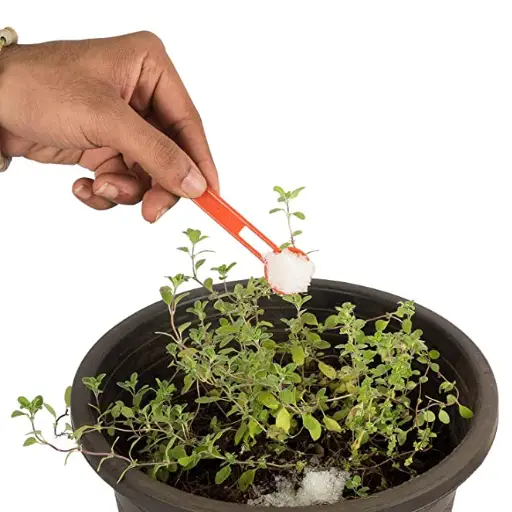
Potential overuse and its consequences
An excess of Epsom salt can lead to calcium and potassium nutrient imbalances and magnesium accumulations in the soil cutting off the nutrients the plant can uptake. Too much magnesium in the soil can also increase leaching which can pollute the groundwater. With these considerations in mind, Epsom salt application must be conducted using established agronomic rules.
- Recommended Dosage: Even in the case of plants believed to use Epsom salt, the most common ratio is 1-2 tablespoons dissolved in a gallon of water and used only once a month. Soil testing for magnesium deficiency should always be done before Epsom salt application.
- Optimal Soil pH Range: Soils with Epsom salt require a pH of 6.0-7.0 for best absorption.
- Tissue Analysis: According to standard plant nutritional norms tissue dry weight on leaves must have a magnesium content of 0.15%-0.35% dependent on plant type. Outside these boundaries indicates insufficiency or overuse.
Plant health and soil integrity can be ensured by controlling these variables and reducing the risk of overuse which is their primary concern.
Interactions with other fertilizers and soil additives
With regards to fertilizers, Epsom salt which largely features magnesium sulfate certainly still holds a major level of interest. It is salient to note that magnesium sulfate is also able to influence the availability of nutrients and modify the dynamics of the soil. Hence, some substances pose serious threats to compliance when combined with Epsom salt augmenting its effectiveness. For instance:
- Nitrogen Fertilizers: Magnesium from Epsom salt alone can prove to be overly potent as it will compete with the calcium check as well as the potassium uptake. For example, when ammonium nitrate or urea is utilized, most nitrogen-heavy fertilizers magma salt will prove to be extra powerful. Balance Macronutrient ratios very carefully to avoid nutrient imbalances.
- Phosphorus Sources: Under sulfur philic soils phosphor magnesium can aid in providing more accessible phosphorus, but lower bound levels of phosphorus hp(10-20)/L can lead to competitive absorption conditions due to magnesium being over-absorbed by roots So, a soil phosphorus test should precede any application.
- Potassium Fertilizers: Muriate of potash or sulfate of potash plaster sets the upper limit of phosphorus hp(10-20)/L maintaining it is essential for reducing magnesium being absorbed by roots. For crops, the ideal limit is a soil ratio of magnesium to potassium at 1:2.
- Lime: Ensure magnesium levels stay under 10% of base saturation to avoid these dangers while applying lime to correct Ph; excess magnesium from Epsom Salt may obstruct the structure of soils.
Soil and plant tissue testing can aid in managing these interactions by ensuring that magnesium is applied according to crop needs and environmental conditions. This minimizes the risks of nutrient deficiency, toxicity, or wastage.
Can Epsom salt be used for potted plants and indoor gardening?
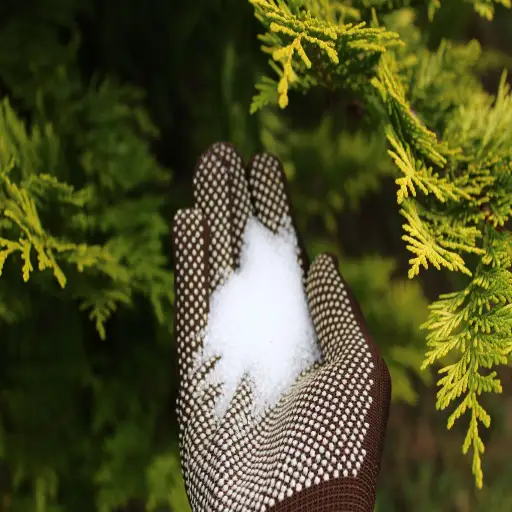
Adapting Epsom salt use for container gardens
The application of Epsom salt in container gardens, as in my use, involves some meticulousness and moderation to prevent nutrient deficiencies. I examine the mix very carefully to ensure the soil has good drainage and the right ratio of nutrients. In terms of Epsom salts, I usually dilute 1-2 tablespoons of it in one gallon of water. The solution can be applied as a foliar spray or directly onto the soil.
- Magnesium Concentration: Additional magnesium should not exceed 10% of the total nutrient base magnesium base; otherwise, it will create competition with calcium and potassium for uptake. Regularly testing the soil is crucial to make sure that this is correct.
- pH Levels: Magnesium sulfate itself is neutral. Nevertheless, I use a pH meter to check pH levels in the container soil every so often to make sure it is between 6.0 and 7.0.
- Application Frequency: Under standard circumstances, I administer the solution of Epsom salts to the plants monthly. In cases where specific deficiencies remain undiagnosed, applications every two weeks may be appropriate.
I fine-tune the rates and frequencies of applications to the particular needs of the plants and conditions of the environment to ensure that nutrients are absorbed effectively without causing the risk of depletion or toxicity.
Benefits for houseplants and indoor herb gardens
Used properly, Epsom salts have their advantages when it comes to houseplants and indoor herb gardens. Magnesium sulfate, for instance, deals with magnesium and sulfur deficiencies which are vital for chlorophyll production as well as overall plant health. Because of this, plants exhibit greener foliage along with improved photosynthesis as well as robust growth.
- Optimal Dosage: I ensure that the concentration of Epsom salts used does not burn the leaves when used for foliar spray. Therefore, I only use 1 teaspoon of Epsom salts per gallon of water.
- Absorption Efficiency: Foliar applications are best for addressing any acute deficiencies, and these applications are best absorbed when using the leaves. For systemic improvement, applying to the soil ensures sulfur and magnesium reach the root zone to prevent deficiency.
- Application Frequency: To ensure a balance, my recommendation is a month-a-part schedule, while in cases of deficiency every two weeks to prevent overworking the nutrient-absorbing mechanisms within the plant.
I monitor each plant to determine what their specific needs are. Ensuring that I monitor leaves for signs of improvement or residual buildups allows me to guarantee that I do not compromise the soil balance or plant health.
Reference sources
Frequently Asked Questions (FAQs)
Q: How does using epsom salt in the garden benefit my plants?
A: Epsom salt for plants can improve nutrient uptake, making them grow bushier and healthier. It provides essential magnesium and sulfur, which are good for plants and help them thrive.
Q: Is epsom salt good for tomato plants?
A: Yes, epsom salt is good for tomato plants. Adding epsom salt can help them absorb nutrients more efficiently, leading to stronger and more productive plants.
Q: How do I apply epsom salt to my garden plants?
A: You can apply epsom salt by dissolving one tablespoon in a gallon of water and using it to water your plants. Alternatively, you can add a cup of epsom salt directly to the garden soil around the base of the plants.
Q: Can epsom salt help plants that are not thriving?
A: Yes, epsom salt can help plants that are struggling by providing magnesium and sulfur, which are essential for plant health and can help plants grow more robustly.
Q: Are there any plants that don’t like epsom salt?
A: While many plants benefit from epsom salt, certain plants, like those not requiring high magnesium levels, may not benefit as much. Always check specific plant needs before application.
Q: How often should I add epsom salt to my plants?
A: For most garden plants, applying epsom salt once a month is sufficient. However, for tomato plants and other magnesium-loving plants, you can increase the frequency to every two weeks.
Q: Can I use epsom salt for pitcher plants?
A: Pitcher plants, which prefer nutrient-poor environments, may not benefit from the use of epsom salt. It’s best to avoid adding epsom salt to their soil.
Q: What are the benefits of using epsom salt in gardening?
A: The use of epsom salt in gardening improves plant health by promoting nutrient absorption, preventing deficiencies, and helping plants grow bushier and more vibrant. It’s an easy and effective way to enhance garden productivity.
Q: Is table salt a suitable substitute for epsom salt in the garden?
A: No, table salt is not a suitable substitute for epsom salt in the garden. Table salt can harm plants, whereas epsom salt provides beneficial nutrients that help plants grow.
